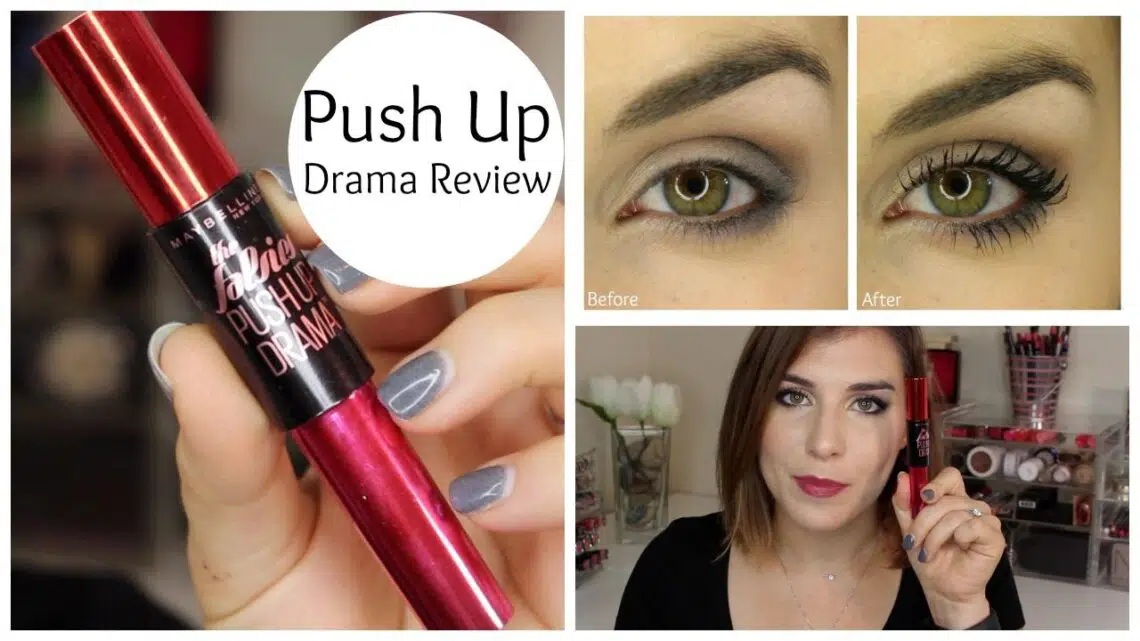Intro
I really like this mascara. It’s cheap to buy, it does what it says on the tin and it does as well as I expect from cheap mascara. It comes with a brush that’s a bit on the big side but it gets the job done and even though I’ve tried other brands that are at or above the price I am paying this mascara, nothing else I’ve tried has come close to matching my experience with this mascara.
I think that that’s good enough for me.
If you want to learn more about the product, please do so here: http://www.maybellinecosmetics.com/the-falsies-push-up-drama-review/
Pro and cons
I’ve used both, and I have an opinion on this debate.
My personal preference is to take a hands-off approach. I don’t want to tell people what they should or shouldn’t do; I just want them to have a good experience using my product.
I also don’t think this is the right time to push it too far: there are many other products that have come out in the past year or so that are doing very well in their respective markets and are not in any way dependent on the mascara market being ripe at that point.
In contrast, when I first started using Maybelline BB Cream on my own, I was amazed by how many people had already bought samples for themselves and were amazed by how well it worked. It had such an immediate impact on my life that it felt like an accomplishment — a validation of what we as developers try to do with our products: make something useful and exciting for people.
Another option is to assertively tell people what you find problematic about them (which can sometimes be hard if you aren’t trying to get something out of it). For example, the other day I noticed someone had tweeted about having “no problem with me being racist” — which made me wonder why this person didn’t like white people and what her reasoning was for not liking them — but then realized she hadn’t actually said anything wrong, just mentioned something she didn’t like others doing or having done. In any case, her statement seemed valid enough in itself (even if it wasn’t quite right), so let her have her say without taking sides: let the chips fall where they may.
I also think you should take a more neutral stance when talking about your product: while we can be pretty good at debating our own positions, we usually aren’t so good at talking about others’ positions — and that might be valuable knowledge for everyone involved (and mutual gain).
Finally, I think there is nothing wrong with stating your position calmly but clearly and implementing it effectively: just because you believe someone else has done something stupid doesn’t mean it’s not stupid yourself!
Conclusion
I have to admit that I was not a fan of the “nose-groomer” mascara I tried. It didn’t give me full coverage, and it clumped up at the edges. Additionally, it did not really make my eyes look bigger or brighter.
Given that this is a Mac product, I thought this would be an interesting challenge to see if I could improve on the product in any way by doing things like:
• making the brush larger (to minimize clumping);
• using a different formula (for more volume);
• using different colors of mascara;
• using longer length on each individual lash; and
and many other small tweaks and changes… In order to do that, I had to put aside my dislike of what Mac Cosmetics has done in recent years and do some serious thinking about where their product was going in terms of direction and what it needed to become. This is a problem for any consumer-facing company: their customers are always going to be concerned with brand loyalty (a big part of reason why we love brands like Nike) but also with customer satisfaction. So how can you prove that you’re adding value? How can you build a brand which people will love? One thing you can never do is ignore feedback from your customers — you need to listen carefully to them about what they want from your products, because if all you’re doing is producing more of the same things they already buy without improving user experience, chances are they won’t stick around long enough for your products to make any real improvements… And so it goes: one must always keep one foot on the market while maintaining control over their own destiny. With that out of the way, let’s get into the actual review itself…
The objective behind this review was twofold:
1) To show my appreciation for Mac Cosmetics for making such an awesome product which was still a bit hit-or-miss for me when it came time to actually use it (however), and 2) To demonstrate just how much better than my old favorite, L’Oreal True Match Mascara, Mac’s new Power Lash mascara really is (however). So here goes…
L’Oreal True Match Mascara Performance & Packaging: The new Power Lash comes in plastic packaging instead of paper, which makes sense given its current price point ($6 CAD versus $
